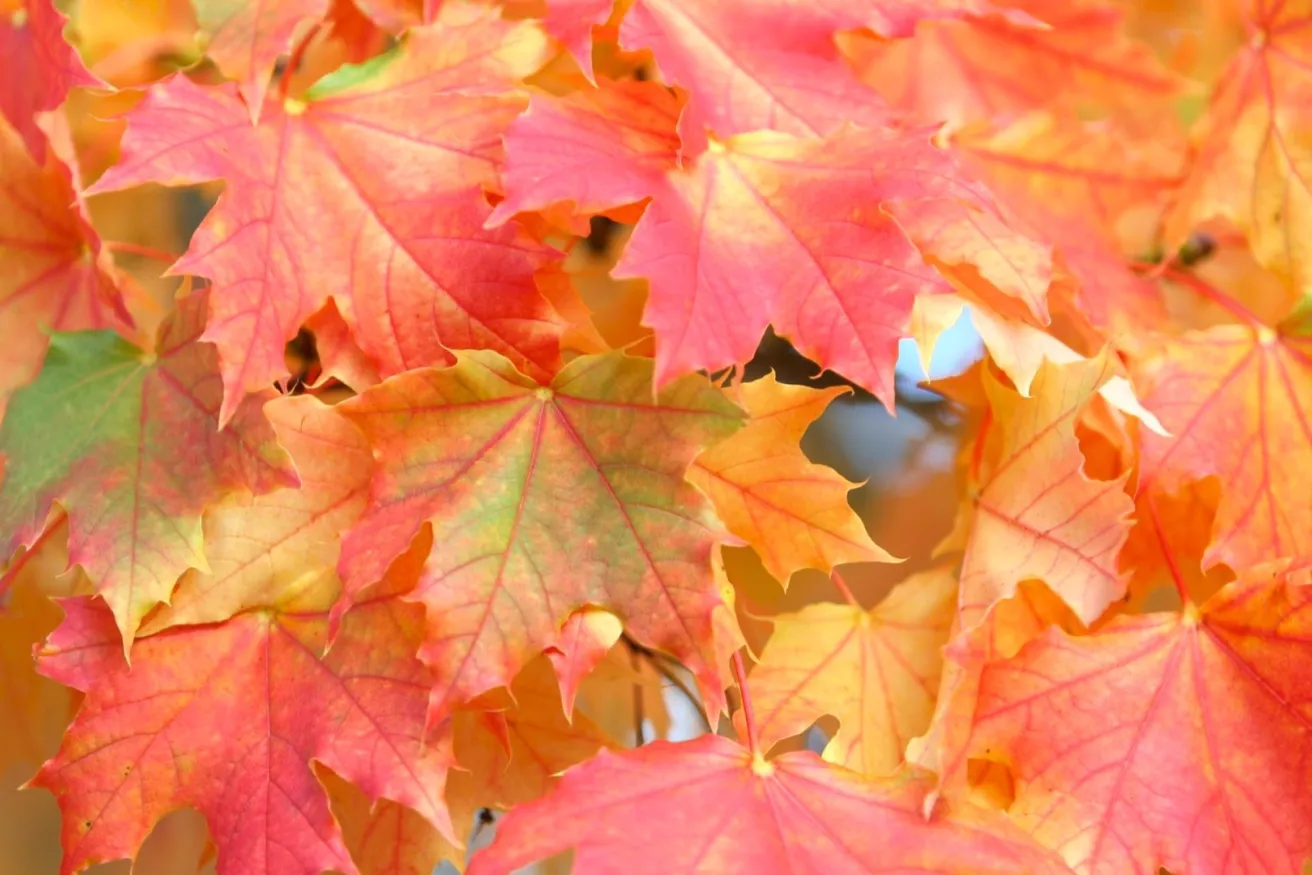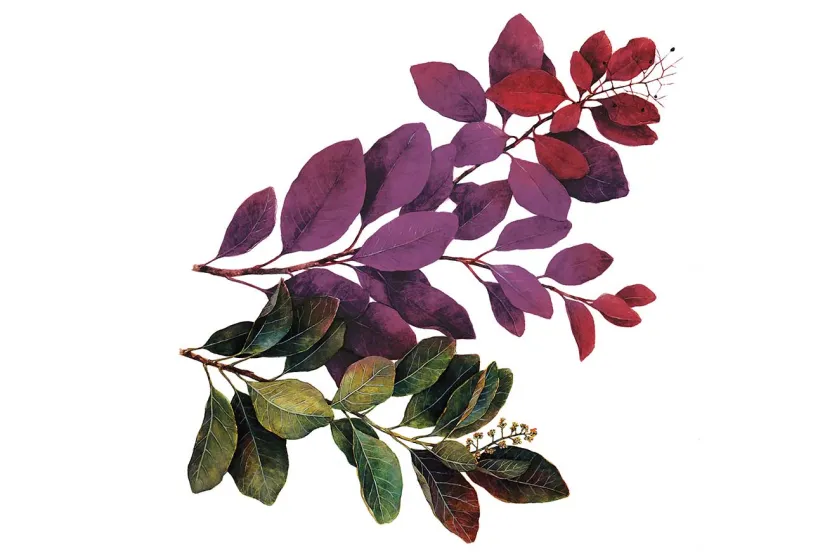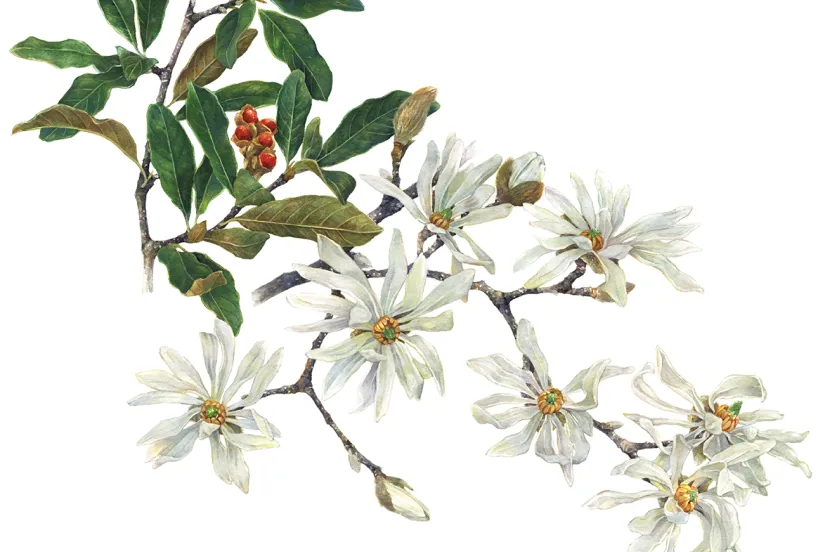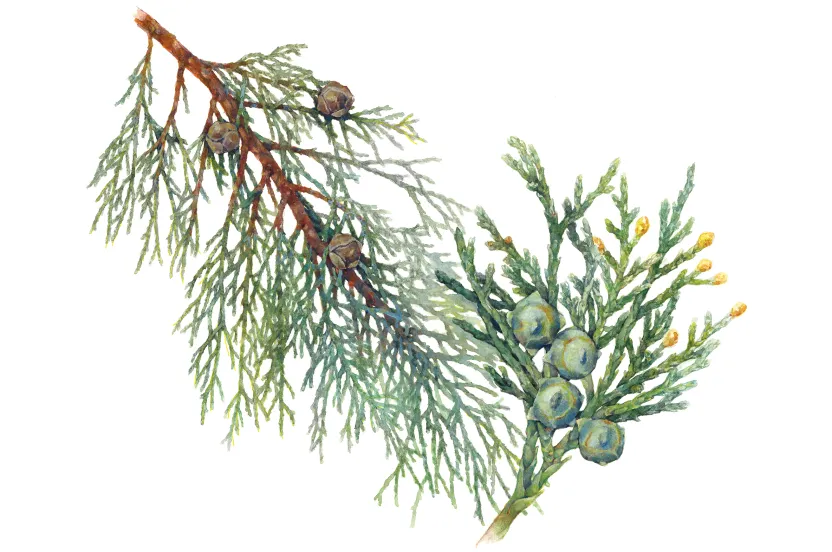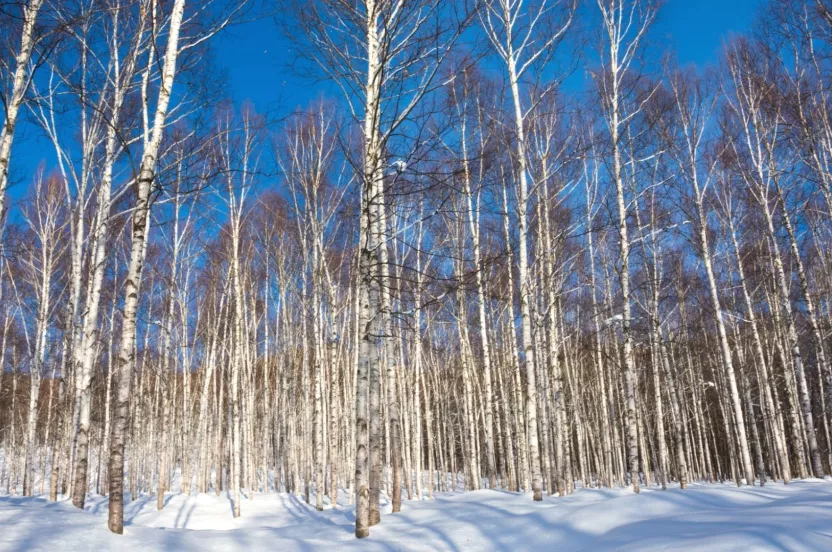Acer saccharum
Europeans were long familiar with the qualities of the maple wood. Species growing in the old world were used for the unpleasantness of pikes and lances. Imagine the happy surprise to find a maple in the New World from which fine furniture could be crafted and from which sugar could be produced in great quantity. So great, in fact, that it became an important commodity to sell or trade for merchandise in the early years of our country.
Explorers had learned of “sugaring” from the Iroquois and other Native people. To the Natives, one of the luxuries of life was eating “sapsicles,” the icicles of frozen maple sap that for from the end of a broken twig.
Natives also set up early spring camps in maple groves and collected sap from V-shaped gashes they would cut in the trunks. Since metal boiling pots were not available, they would laboriously boil down the sap by dropping heated rocks into water-tight baskets or containers made out of bark, clay, or hollowed out logs. When the water was boiled away, the residue was dried and pounded into a course sugar, or poured into wooden molds and saved as cakes or blocks for gifts, trade, or later use. Among the uses were bear fat mixed with sugar, and a pleasant summer drink made by dissolving chunks of the sugar in cold water, like a forerunner of iced tea.
By 1790, settlers had learned that a small hole was far better for tree health than gashes, and they used hollowed stems of elderberry for little pipes, or “spiles” (from the word, spill) to tap the flow of sap. The clear liquid was collected in wooden buckets, then boiled down in large, iron kettles over an open fire. Syrup, as we know it, was at first impractical because there was not a good way to store it. Like the Natives, the settlers made blocks of maple sugar to be broken up or shaved later in the year as needed.
Eventually, sugar houses were built to shelter the boiling process and large, flat pans were made to speed up the task of evaporating the water. By 1890, when an import tax on white cane sugar was removed, cans and bottles had become part of the technology of food storage and sugar-makers moved into making maple syrup. An industry was born that to this day is an important part of the rural economy in New England, New York, Michigan, Wisconsin, and other eastern states.
It’s Chemistry, Not Magic
In Autumn, sugar maples flame by day and glow in the crisp twilight. But the brilliant colors are due to chemistry, not magic. Nor do leaves actually change colors, they simple reveal colors that have been there all through the summer.
Watch Ask an Arborist: Why do Leaves Change Color?
With the approach of short, cold autumn days, the amount of green chlorophyll in a leaf decreases. This allows other pigments that had previously been masked by the abundance of green to shine through. In the case of sugar maple, “carotenoids” dominate in autumn leaves. These pigments provide the yellow and orange colors that are common in sugar maples. Red and purple colors come from the pigment “anthocyanin,” which is also present in sugar maple but more common red maple.
What’s in a Name?
The Latin name, saccharum, means “sweet or sugar.” Other common names for this species are hard maple and rock maple, references to its extremely dense wood. The feature, too, is reflected in the scientific name for the maple genus, Acer, derived from the Celtic word ac, or “hard.”
Sugar maple is so beloved that more states have claimed it as their state tree than any other single species. It is the sylvan symbol of New York, Vermont, Rhode Island, Wisconsin, and West Virginia.
